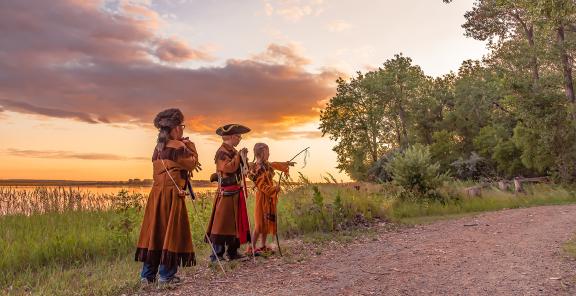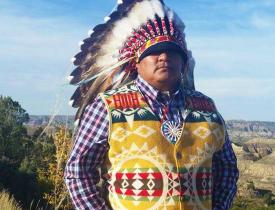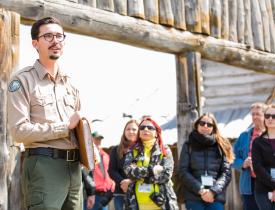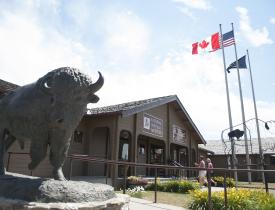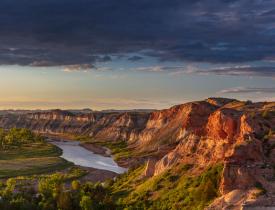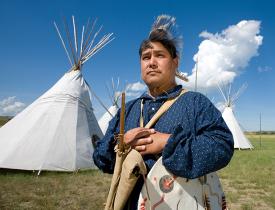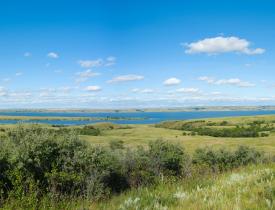Fun Facts About the Lewis and Clark Expedition and its Time in North Dakota
Learn the inside facts about the expedition's 214 days in North Dakota.
Uncover the details of Lewis and Clark's great journey and then test your knowledge with the Lewis and Clark trivia quiz below.
How long was the expedition in North Dakota?
The expedition spent 214 days in North Dakota on two separate visits. The group spent 146 days on its outbound trip in October of 1804, when it set up a winter camp near Washburn. The second visit was on its return from the Pacific. The expedition stopped again in August of 1806, which was when Sakakawea was returned to her home. One quarter of the expedition was spent in what is now called North Dakota.
Were Lewis and Clark the first white men in North Dakota?
Fur traders and trappers from Canada and other areas had been coming to the area for around 60 years prior to Lewis and Clark’s arrival. The Knife River Indian Villages was a large trading Mecca and in 1803 more people lived in the villages than in St. Louis.
What did they eat?
Expedition members carried some food supplies with them like pork, flour, dried soup, lard and liquor. While in North Dakota, the Corps found bountiful game like buffalo, elk, deer and antelope - the men were documented as sometimes eating up to nine pounds of meat per day! They also obtained food like corn, squash and beans from the Mandan and Hidatsa Indians.
Why is the winter camp located in Washburn, named Fort Mandan?
The camp is located in present day Washburn, North Dakota, but the fort is named after the Mandan Indians who were known for being peaceful and hospitable.
Where did the Mandan and Hidatsa peoples live?
The Mandan and Hidatsa’s village site remains are still easily visible at the Knife River Indian Villages National Historic Site, near Stanton, about 30 miles west of Washburn.
What sort of animals were in North Dakota in 1805?
Lewis and Clark found hundreds of thousands of buffalo, elk, deer (including mule deer), antelope, prairie dogs and beaver in North Dakota. Near Bismarck, men of the expedition wounded their first grizzly bear, but it escaped before they could find it.
Were there any injuries during the expedition?
Captain Meriwether Lewis was accidentally shot near present-day Williston on August 11, 1806. He was shot by one of the crew members (Pierre Cruzatte) during a hunting expedition. Lewis was dressed in buckskins at the time and Cruzatte was known to be very nearsighted. Lewis was shot in the buttock, and no arteries or bones were severed. Clark wrote that Lewis was fully healed by September.
Lewis and Clark Trivia
- What breed of dog went along on the expedition?
- Name Lewis' dog.
- How many expedition members died during the trip?
- Who died on Aug. 20, 1804?
- Where is he buried?
- How many people did the Corps of Discovery members kill on the journey? Under what circumstances?
- Where did the Corps of Discovery spend the winter of 1803-04?
- Where did the Corps of Discovery spend the winter of 1804-05?
- Where did the Corps of Discovery spend the winter of 1805-06?
- What military rank did Meriwether Lewis hold during the expedition? How about William Clark?
- What is the only physical evidence of the expedition on the Lewis and Clark Trail today? Where is it?
- The expedition portaged canoes and supplies on what rivers and in what states?
- What did the expedition members make during the winter of 1805-06?
- Who was the Indian woman on the expedition? Name her infant, son who also traveled with the Corps of Discovery.
- What year did Meriwether Lewis finally published his journals after the expedition?
- Total length, in miles, of the trail from St. Louis to the Pacific Ocean? How long did it take them?
- When did planning for Corps of Discovery begin? By whom?
- When did McKenzie complete his journey? With how many men?
- Jefferson asked Congress for this amount of money for the expedition. When?
- Clark's 34th birthday.
- How much meat was needed to feed one man each day?
- Name some mammal specie discovered on the expedition.
- Name the Indian tribes the expedition lived near during winter of 1804-05.
- Name the Indian tribe that traded with expedition and provided horses to cross the Rocky Mountains.
- Clark's slave’s name?
- True or false, Meriwether Lewis decided the location of Fort Clatsop.
- How did expedition decide where to spend winter of 1805-06?
- How large an area did the Louisiana Purchase encompass?
- How many days without rain did the men enjoy at Fort Clatsop?
Answers:
- Newfoundland.
- Seaman.
- One.
- Sgt. Charles Floyd.
- Sioux City, Iowa.
- Two Blackfeet Indian warriors on July 27, 1805, during an encounter between Lewis and a handful of men and what were probably teenagers who pilfered several guns from sleeping expedition members early in the morning.
- Camp Dubois in present day Illinois.
- Fort Mandan in present day North Dakota.
- Fort Clatsop in present day Oregon.
- Captain. Lieutenant.
- Clark's signature carved in sandstone at Pompey’s Pillar east of present day Billings, MT.
- The Ohio River on the way to Camp Dubois, on the Missouri River at Great Falls, MT and several times on the Columbia River.
- Salt and clothing.
- Sacagawea. Jean Baptiste Charbonneau.
- Lewis never published his journals.
- Approximately 3,700 miles, over 2 years, four months, 10 days.
- Fall of 1802 by President Thomas Jefferson and Meriwether Lewis after they had read the account of Alexander McKenzie crossing Canada to the Pacific Ocean.
- July 22, 1793, with nine men.
- $2,500 in a confidential message of Jan. 18, 1803.
- Aug. 1, 1804.
- Nine to 10 pounds.
- Prairie dog, pronghorn antelope, grizzly bear, coyote, bighorn sheep.
- Mandan and Hidatsa.
- Lemhi Shoshone.
- York.
- False.
- Members of the expedition, including York and Sacagawea, discussed the options and voted on what to do.
- The Louisiana Purchase was 825,000 square miles of land.
- There were but 12 days without rain at Fort Clatsop, according to Chief Cliff Snyder of the Chinook Tribe.
